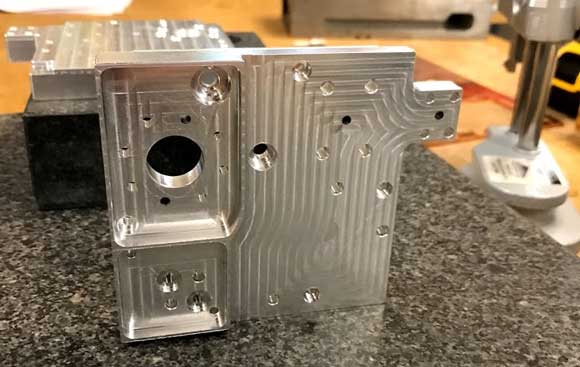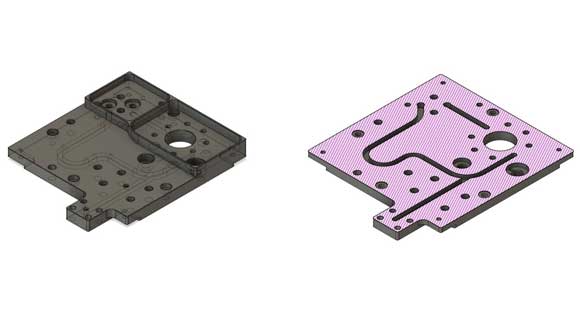Fabrisonic’s ultrasonic Additive Manufacturing used to produce aluminium satellite heat exchangers
February 5, 2021

Fabrisonic LLC, a manufacturer of Ultrasonic Additive Manufacturing (UAM) solutions, headquartered in Columbus, Ohio, USA, has utilised its SonicLayer® 1200 metal Additive Manufacturing machine to build satellite heat exchangers in 6061 aluminium, approximately 100 x 114 x 15 mm, for a project conducted by Utah State University’s College of Engineering.
The company is reported to have a wide range of experience producing heat exchangers with complex internal geometries using UAM, which have endured NASA Jet Propulsion Lab’s harsh testing criteria.
Usually, the heat exchangers are additively manufactured on larger machines such as the company’s SonicLayer® 7200. This is how Fabrisonic initially produced the 6061 aluminium satellite heat exchangers in order to yield fully hermetic heat exchanger units. However, the company realised that these parts were ideal to test the SonicLayer 1200’s ability to build complex channel geometries.
In order to create the complicated fluid passages running through the heat exchangers, slots were CNC machined using the subtractive portion of the hybrid (additive and subtractive) system before being filled with Fabrisonic’s patent-pending support material. With the support in place, channels can be sealed without metal extruding into the cavities. During the post-processing cleaning operation, the support material is washed out to leave smooth and dimensionally accurate fluid channels.

With the internal channels complete, the part was built to net shape then machined to final dimensions in place. With geometric dimensions and features matching the model, the next step was to ensure the heat exchanger was fully functional and leak proof. For this part to perform its role on the satellite, it must be hermetically sealed to prevent refrigerant leakage into the vacuum of space.
To validate seals of the heat exchangers, the units were submerged in a tub of water and channels were pressurised to 50 psi. If any air bubbles escaped to the surface of the tub, it would indicate that the channels were not hermetic. The company states that all of the parts passed this test and are now on their way to final testing at Utah State University, where a sensitive helium leak detector will be used to simulate the vacuum of space. These results will determine how well the small heat exchangers can perform, and whether they are capable of use in space.
















